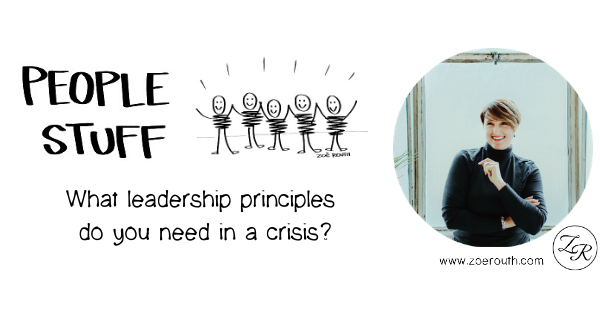
When I worked at Outward Bound, leadership development in the outdoors, we were taught how to manage and lead in a crisis. The scariest part of the job was having to contend with an injury or accident of some sort in remote locations. We needed to be prepared and ready for anything. One of the things that they taught us is that whenever we came across an accident or an incident, the first thing to do was to stop the moving parts. I think this is a brilliant catchphrase regardless of leadership context.
Things can quickly escalate if we do nothing to stop them. On a run recently with my running buddies, one of my fellow runners took a significant tumble. She ripped skin off her hands and knees, and went into shock. Her face was sheet white and she felt nauseous. Straight away, people jumped into action. She was getting conflicting messages to lie down, to sit up, to drink water, to not drink water, to clean the wound, to not clean the wound, to bind the wound, to not bind the wound. Everyone was pumped up full of adrenaline wanting to care for her.
Some more runners came up behind us and even more people wanted to help. There were people running everywhere to get cars, choose a different route, get keys for the locked gate…it was a little chaotic.
What we needed to do was just stop the moving parts. This way we might have avoided three competing plans, all trying to rescue and save the poor woman. Luckily the incident was minor. After ten minutes or so, she regained colour in her face, shock subsided, and she was able to walk the rest of the way back to the car.
I see this all the time in leadership groups. A chaotic experience arises like the coronavirus and people’s biology kicks in. We’re all wired for threats and when we feel apprehension, our amygdala is triggered and it floods our system with cortisol and adrenaline. We are in fight, flight, or freeze mode. This is not our best problem-solving mode! We work best when we are calm and composed.
“Stop the moving parts” is a useful circuit breaker. When we say “stop the moving parts”, we stop reacting and can gather ourselves. Then we can process things a little bit more consciously.
Where could you apply to stop the moving parts in your team meetings?
***
Related Articles:
How to deal with stressed out teams
How to Reset the Team After Shutdown
How to lead with confidence through uncertainty
***

